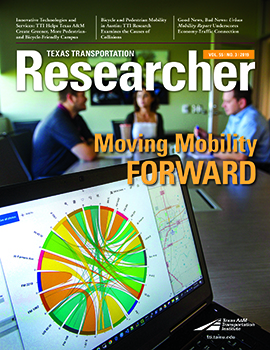Our definition of mobility is changing. At its most practical in transportation, mobility describes the safe and efficient movement of people and goods. But today that’s only part of the story — an artifact of last-century thinking.

Today, we’re linked through the Internet of Things, creating opportunities for efficiencies never dreamed of a mere generation ago. Data are shared nonstop from our smartphones, a precursor for the constant information exchange to come between automated vehicles and intelligent infrastructure. The 20th-century approach to increasing mobility by making individual travel modes more efficient is becoming moot, broken down by the system’s reliance on intermodal data transfer. The smartphone, the car, the traffic signal, the website hosting your travel reservation — all communicate through the ether, working in the background to make our lives more convenient and, on the best of days, safer than ever before.
This operational evolution is spurring a corresponding change in how we view mobility, as seen in the Mobility as a Service (Europe) and Mobility on Demand (U.S.) initiatives. Mobility is being redefined as a quantifiable service, with its relative value determined by the marketplace of transportation consumers. Renting a car can be expensive when you travel for work, but hopping an Uber or Lyft can meet your needs more sensibly. If you’re a shipper — I’m looking at you, Amazon — maybe it’s more efficient to drop that package off by drone than ship it via FedEx.
This à-la-carte approach promotes consumer choice and, like all sustainable services, focuses on convenience and cost as oft-competing performance measures. The combination of modes we’ll choose to get us to work and home again in 2050 will depend on the benefit we perceive for each mode versus its cost. That’s true today, of course — you can fly cross-country in hours instead of spending days driving — but tomorrow, my menu of choices will be far more complex. Today’s travel apps show you the quickest path to your destination, offering, for example, options to take toll roads to save time. I’ll go on record and say that, in the future, these apps will also offer a menu of modes you can mix and match for one trip to achieve the most satisfying and cost-effective travel experience.
From the invention of the saddle and stirrup to Ford’s Model T and beyond, technological innovation and human ingenuity have always worked together to advance mobility. Combined, they pull the potential of genius into the realm of the possible. As our system becomes more integrated and its constituent parts less easily differentiated, so too must our outlook become more holistic. Data are the mathematical language that will tell the story of transportation’s future.
We just need to make sure we’re listening.
